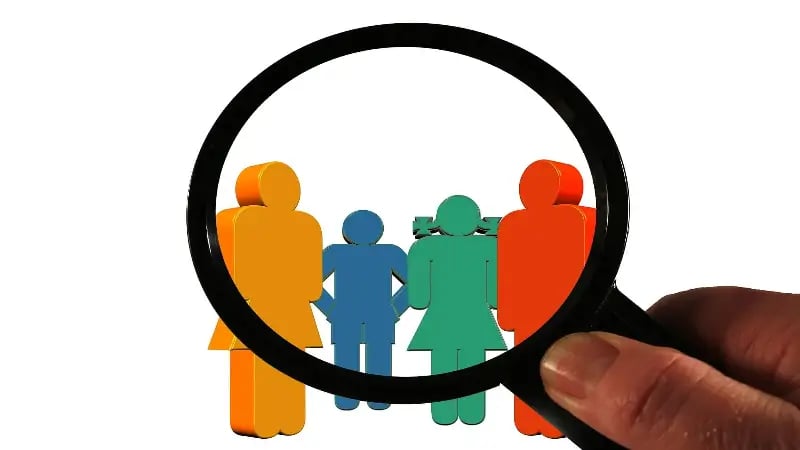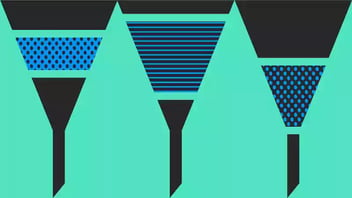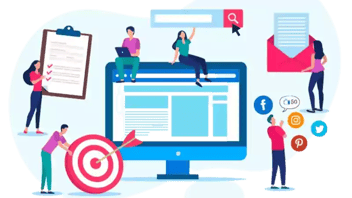Generate More Leads: Unlocking the Power of the Conversion Funnel
Chances are, the elements of a conversion funnel are not new to you, and their significance is well within your understanding. As such, you should know that it's vital that you enhance inbound lead generation by successfully transforming more potential leads into active buyers.
However, it's crucial not to overlook the situation where visitors fail to progress to the next stage of the funnel. This is a moment to engage in introspection and tackle tough questions head-on: Why do these visitors decide to disengage? How can I implement strategies to reengage and draw them back into the fold?

Why do they choose to leave?
A funnel has no holes. Everything that goes into the top of a funnel makes it to the bottom. A sieve has holes; you lose some of what gets poured in. The technical way to refer to this is attrition. An attrition rate is the proportion of people who leave without making it to the bottom of the funnel. Just about every conversion funnel loses people. Sometimes, it's because your company isn't the right fit. But in other cases, attrition is due to factors that we can fix:
Not offering the next step.
It's essential in every stage of the buyer's journey to continuously offer more information to push them further down the funnel. Never expect your visitors to be proactive. For example, if visitors follow a social media link to some of your content, they may not want to browse other website sections. While you have them on your site, develop offers for related products. Always give them a place to visit next.
Not communicating the benefits.
You can go into detail for days about what your product or service offers, but you must talk about the benefits it can provide. How does your business solve a buyer's problem? Put simply, how can it better a customer's life? This is very important during the interest and desire stage, where many of your leads will vanish if you do not provide them with the correct information.
Not Using Strong CTAs.
Call-to-actions are beneficial when converting leads into buyers. There are multiple different CTAs for each stage of the conversion funnel. It's a good idea to be very clear and concise with the desired actions the user should take. Be sure to use brightly colored buttons and robust, succinct language.
Having a complicated final action process.
Keep in mind your sign-up, check-out, and subscription process. Is your process several pages long? Do you ask for too much information? It would help if you made the final purchasing process as painless as possible for a customer. The worst is when you have gotten so far with a lead, and they decide to leave your company because you had a very complicated final purchase process. Keep your action page clear, concise, and easy to use.
What Can You Do to Bring Them Back?
It's easy to focus on bringing new visitors to their website. But don't forget that returning visitors already had exposure to your brand, making this audience easier to convert into buyers. It's up to you to use the best tools and practices to bring back visitors. Returning visitors are essential for your website because it shows who your loyal customers are, how strong your brand awareness is, and how successful your marketing campaigns are. Usually, returning visitors have a higher chance of purchasing than new visitors. This is important because you can expect a higher ROI on your campaigns.
There are many ways to get visitors to your site, from re-engaging with your audience to PPC ad retargeting to popup forms. It's always wise to include these valuable tips to bring back your visitors and convert them to buyers.
Ad Retargeting
Retargeting involves displaying ads to a user who has visited your website, interacted with your social media posts, watched a video, or interacted with your brand. Building strategic retargeting ads through Google, LinkedIn, or Facebook is a bright idea. These sites work by tracking cookies to display ads. For example, when a user enters your site, a cookie is placed in their web browser. The tracking code for these cookies shows retargeting ads based on visitor behavior. Remember, the main point of retargeting ads is to send reminders to your visitors to return to your website to offer them a solution to their problems.
Showcase products your audience is interested in.
Many websites use dynamic re-marketing to attract visitors right back to their sites. Dynamic re-marketing is a feature that automatically creates ads that feature the top products a visitor searched for during their last visit to your site. This form of retargeting is highly effective by reminding users how much they loved a product, pushing them to return, and hopefully converting them into customers.
Nudge visitors by building a sense of urgency.
Creative marketers use the fear of missing out (FOMO) to get a visitor back to their website. They may use tactics like "last-minute deals" or "hurry before supplies last." This tactic provides wonders to click-through rates and conversion rates. The best way to instill FOMO into your retargeting audience is to use ad customizers. Some of these will be short snippets of code inserting countdowns in your ads, urgently pushing a visitor to purchase.
Offer discount codes and coupons.
A customer who has already visited your site, researched your product, and compared it to other sites, is an example of a customer who “shopped around.” This prospective customer who came across your website liked what you offered but decided not to follow through with the purchase, existing your site altogether. Once they leave your site, it can be tough to get them back because they may find a better offer. Sometimes all it takes is a discount or special offer to spark interest in your brand again. You can place these offers on Facebook to entice a visitor to come back and reconsider a purchase.
Pop-up Forms
Pop-up forms can be vital to retargeting and keeping your audience on your website. They entice a viewer to continue learning, download something, purchase a product, etc. Pop-ups are used on websites; they suddenly appear and force you to take action. You either click cancel, or you continue with the clickbait.
Examples of Pop-ups
While pop-ups can be annoying, choose the least aggressive form to demand attention and action:
-
Page entrance: Appear when a visitor first arrives on your page
-
Page Scroll: Appear when the visitor scrolls through the page
-
Element interaction: Appear when the visitor clicks on or hovers over specific content
-
Time on Page: Appear when the visitor takes a particular amount of time on a page
-
Exit Intent: Appears when the visitor scrolls to the top of the page to leave
- Inactivity: This appears when the visitor has not taken action on the website in a long time
Offer Something Relevant and Valuable
The main issue with pop-ups is hindering visitors' experience on your website. This is because what's offered in the pop-up is not valuable to the visitor or irrelevant to the page. Try to choose pop-ups that will enhance engagement rather than interrupt it. This creates a better experience for a visitor on your site. Be sure to make a valuable and relevant pop-up for your visitor. For example, you can create a pop-up that offers a promo code or discount before the visitor tries to leave your site.
Pay Attention to How People Engage With Your Pages
Think strategically about the timing of your pop-ups. The best way to figure out when to place a pop-up is to examine how visitors interact with each of your pages on your website. Pay attention to bounce rate and average time spent on a page to understand how visitors engage with pages. Make it a habit to view exactly where your visitors click and scroll. These tips will help you better understand how people engage with your content.
Use Language That is Specific, Actionable, and Human
Here is the nitty-gritty of pop-ups and arguably the essential aspect. It's very important to specify precisely what visitors will receive if they click on a pop-up. Be very specific in your wording--don't dance around what they will get. Make it very clear for the visitor. Allow your visitors to take action. Let visitors know exactly what you want them to do, compelling them to take action. Most importantly, sound human. Your pop-ups should be a warm welcome to a website visitor. If you can, use conversational language to connect with your visitors.
Your conversion funnel will never be perfect. Your most important task should be converting leads into buyers throughout your conversion funnel. However, addressing why particular leads do not convert to the next stage in your conversion funnel is essential. With that being said, utilize ad-retargeting and pop-up forms. It's essential to reengage with a past visitor of your website. It is easier to convert a former visitor into a buyer than a brand-new viewer who has never seen your service or product.
This content is also available in:
- German: Mehr Leads generieren: Die Kraft des Konversionstrichters freisetzen
- Spanish: Embudo: Más leads, más ventas
- French: L'entonnoir de conversion : Générer plus de prospects
- Italian: Generare più lead: liberare il potere dell'imbuto di conversione
- Chinese: 产生更多潜在客户:释放转化漏斗的力量









Leave a Comment